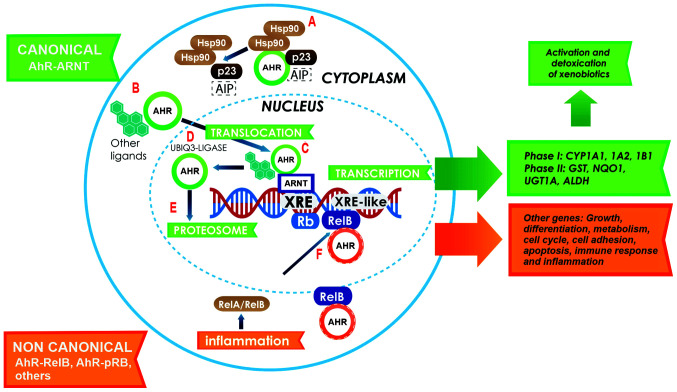Figure 1.
Canonical activation of the AhR pathway. In the cytoplasm, AHR resides in a molecular complex, to give it stability (A); this complex is formed with two Hsp90 proteins, AIP and p23. Following ligand binding, AHR dissociates from the complex and translocates to the nucleus (B). Inside the nucleus, AHR dimerizes with ARNT (green arrows) to form a heterodimer that binds to the XRE sites on the gene promoters involved in xenobiotic metabolism (C). Following the activation of response genes, AHR becomes the target of the ubiquitin 3-ligase (D) and undergoes degradation by the 26S proteasome in the nucleus (E). The activation of the non-canonical pathway (orange arrows) is performed through the binding of AHR to other proteins, such as pRB, RelA or RelB. In this case, AHR and RelB together bind to other genes with an XRE cis site in their promoter, and activate several genes that participate in growth, differentiation, metabolism, the cell cycle, cell adhesion, apoptosis, immune response and inflammation (F). AHR, aryl hydrocarbon receptor; Hsp90, heat shock protein 90; AIP, AHR-interacting protein; ARNT, AHR nuclear receptor translocator; XRE, xenobiotic response elements; pRB, retinoblastoma.

